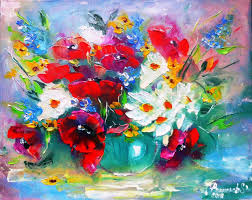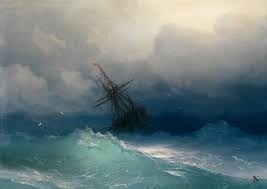RUSSIAN ACADEMY OF ART OF ST. PETERSBURG (part 1)
 In 2007, the Russian Academy of Arts celebrates its 250th anniversary. November 17, 1757 (old style – November 6) – The governing Senate of the Russian Empire adopted a decree on the establishment of the “Academy of the Three Noble Arts.” In fact, such an institution in Russia was conceived much earlier, and by that time it had been successfully operating for at least thirty years. The idea of establishing a community of artists was expressed by Peter the Great and his close associates in the 1690s. After visiting the first emperor of Paris and the French academies in 1719, this idea took on a concrete form, but for many cases Peter the Great signed the necessary decree only shortly before his death, December 22, 1724. He proclaimed the creation of a single “Academy of Sciences and Arts” – a fact that is very important today, since the Russian Academy of Arts cherishes the fact that it was born simultaneously with the Russian Academy of Sciences and has been cooperating with it for almost three centuries.
In 2007, the Russian Academy of Arts celebrates its 250th anniversary. November 17, 1757 (old style – November 6) – The governing Senate of the Russian Empire adopted a decree on the establishment of the “Academy of the Three Noble Arts.” In fact, such an institution in Russia was conceived much earlier, and by that time it had been successfully operating for at least thirty years. The idea of establishing a community of artists was expressed by Peter the Great and his close associates in the 1690s. After visiting the first emperor of Paris and the French academies in 1719, this idea took on a concrete form, but for many cases Peter the Great signed the necessary decree only shortly before his death, December 22, 1724. He proclaimed the creation of a single “Academy of Sciences and Arts” – a fact that is very important today, since the Russian Academy of Arts cherishes the fact that it was born simultaneously with the Russian Academy of Sciences and has been cooperating with it for almost three centuries.
True, it took another quarter of a century for an exact regulation to be created that defined the role of art in this, as one of the documents of that time read, “the social network of art and science.” The first “Meeting of the Academy of Arts” was held in St. Petersburg under the chairmanship of Academician Ludwig Dominic Schumacher on June 8, 1748. This time in the history of academic art cannot be underestimated. It covers the entire era – from the death of Peter the Great to the last years of the reign of Elizabeth Petrovna, that is, almost the entire period of the imperial baroque in Russia – one of the brilliant stages in the development of Russian art. Among the accomplishments of this time, it’s enough to name one thing: Petersburg emerged from the semi-finished, half-conceived city by Peter the Great, with its exquisite regularity and excellent prospects – artistic features that still serve as the basis for the image of the northern capital of Russia. And this was, for which there is a lot of historical evidence, the result of the joint work of people who were in a single Academy, where domestic sciences and arts developed together.
Now we are solemnly celebrating the creation of a separate Imperial Academy of Arts, especially its glorious initial “Shuvalov” period of life. The well-established Peter’s reforms allowed the people of the 1750s to engage in the creation and strengthening of the new structure and character of Russian culture, to achieve its recognition in European countries. It is no coincidence that Moscow State University and the Russian Academy of Arts consider one and the same person as their founder, Ivan Ivanovich Shuvalov. This is one of those historical events that shaped the fate of the Academy and of which it is proud. From 1757 to 1764, the Academy of Arts was a part of Moscow University, although it was decided to place it in St. Petersburg. Cooperation with Moscow State University continues today and has two and a half centuries.
The presidency of I.I.Shuvalov not only extended his favor with the Empress Elizabeth Petrovna to the institutions he headed, but also ensured, thanks to his personal contacts, the Academy’s contacts with primary figures of culture and the learned communities of Europe. No wonder the first edition of the famous collection of engravings “Vases and Candelabra” by Janbatista Piranesi indicated that it was carried out in Rome at the expense of I. I. Shuvalov. In Paris, the Russian nobleman was advised by the most illustrious architects, and the first among them, Jacques Francois Blondel, sent his cousin Jean Baptiste Michel Wallen-Delamot, who became one of the authors of the Academy building, to St. Petersburg. In London, I. I. Shuvalov was the first among the Russians to be elected to the oldest of the English academies, the London Society of Antiquities, and his gifts to this society of antique fragments, acquired by him in Italy, played a role in the formation of the British Museum. Thanks to I.I.Shuvalov, the Academy and with it the idea of Russian art education became established in Europe. The soil arose for the most brilliant of those flourishes that academic art in Russia experienced in different centuries.



